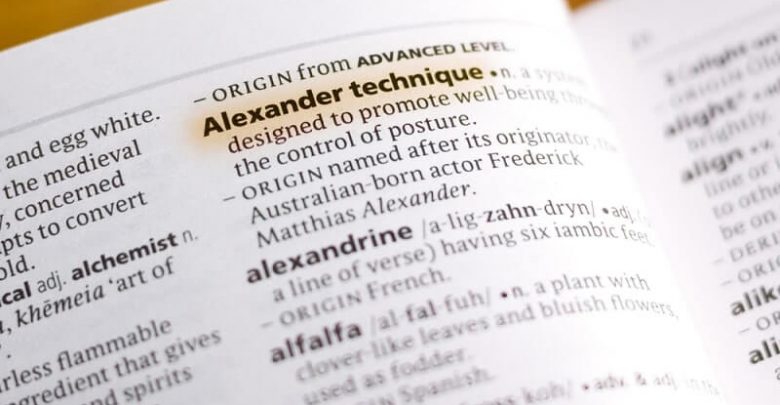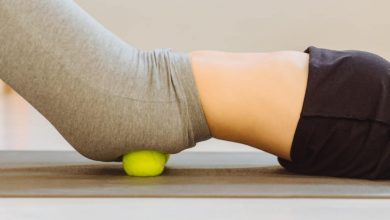Alexander Technique

The Alexander Technique is a special method that re-educates us to regain our natural posture and use our bodies more efficiently. It can help relieve stressrelated conditions, breathing disorders and neck and joint pain. It was developed by Frederick Matthias Alexander who believed that, ‘Every man, woman and child holds the possibility of physical perfection; it rests with each of us to attain it by personal understanding and effort’.

Alexander, an Australian actor born in 1869, was giving recitals of ‘dramatic and humorous pieces’ when he started to lose his voice for no apparent reason. His doctor diagnosed inflamed vocal cords and prescribed various treatments and rest, but his condition worsened. When faced with an operation or giving up his career Alexander resolved to find the cause himself.
He noted that his voice was all right when he was not working so he began to analyse what he did differently when he spoke on stage. He arranged mirrors all around the room to watch himself and noticed that as he recited he sucked in air and pulled his head down, depressing his larynx. This reaction shortened his spine and narrowed his back, affecting his breathing. He noticed that when he spoke normally, he adopted a similar stance but in a less exaggerated way. He realized that this posture represented a pattern of misuse that affected his voice, and that this related to general body tension.
Over the years he tried many new ways of using his body to prevent his old habits affecting his voice. He finally discovered that the relationship between his head and neck and how the head and neck related to the rest of his body were crucial to correct body use. He called this ‘the Primary Control’ because this relationship determines the poise and quality of the whole body. He believed that when the head, neck and back worked in harmony it balanced the whole person.
The Alexander Technique is not a therapy as such, but a process of re-education, which aims to teach us to rediscover our natural poise, grace and freedom, and use our bodies more efficiently. It is often referred to as posture training, which is not strictly correct, although improved postural balance is a benefit. It is taught in lessons by a teacher, not a therapist, and the individual taking the lessons is known as a pupil, not a patient or client.
The Alexander Technique works on the principle that mind and body form a complex and integrated whole. Today, with advances in psychosomatic medicine, this principle does not seem so radical. Most of us now accept that mental, emotional and physical health are linked. But when Alexander was writing at the turn of the century, his holistic theories were considered revolutionary. As a holistic system, the technique is not taught in order to alleviate specific ailments, such as a stiff neck or aching back, but to address the source of problems. However, it has been found that in restoring harmony to the whole person, the specific problems will often disappear.
The Alexander Technique does not emphasize correcting poor posture but aims to get people to move with ease and grace and walk with increased balance and poise. Alexander claimed that we began to misuse ourselves when we became more involved in occupations that restricted our natural movements.
Alexander also believed that our stressful modem lifestyle takes its toll on our mental, physical and emotional health and that we develop poor postural habits.
Today we also lead sedentary lifestyles hunched over office desks, computers, counters, and production lines. We force our bodies into unnatural postures which cause aches and pains. Alexander believed that his technique could help people to undo and prevent the bad habits that so often lead to aches and pains and poor functioning.
How does it work?
The Alexander Technique has to be experienced to be properly understood. It is difficult and confusing to understand the principles from reading about them in a book. However, the people who have taken the lessons are amazed at how simple it all seems.
It may best be understood in terms of the Primary Control. This refers to the dynamic relationship between the head, neck and back. The aim is to direct the head away from the spine without tensing and narrowing the back. The Primary Control can be thought of as a barometer for our general state of psycho-physical health. When the head, neck and back is working well, we tend to feel good. But when the neck is unnecessarily tense it pulls the head back and down towards the spine. This causes the spine to shorten and the back to narrow, a sign of misuse that corresponds to the ‘startle pattern’ which we instinctively adopt when we brace ourselves for a shock. Through education, the Alexander Technique aims to change this startle pattern so that it only happens in appropriate situations.
This system of changing the startle pattern can be achieved through the Alexander practice of inhibition. Inhibition refers to the potential not to react immediately to stimulus. Alexander claimed that success with his technique could only be achieved if we stopped being dominated by unconscious impulses and made reasoned choices about every movement that we made. In his opinion the way to lasting health was to develop conscious use of ourselves in our daily activities. Through inhibition we gradually sustain good primary control of our head, neck and back and achieve a postural homeostasis (balance) that corresponds to mental balance.

It is difficult to explain exactly how this can be achieved, but it can be allied to the osteopathic concept of spinal health and postural alignment, to emotional health in psychotherapy, to the enhancement of skills of the performing artist and to improved self management. Ultimately the technique can only be understood through practice.
What happens in a lesson?
Lessons take place on a one-to-one basis. The lesson will begin with a discussion between you and your teacher about why you have come and what you hope to get from the course. If you have a particular problem that needs resolving, ask her if she thinks Alexander can help and how many lessons she thinks you need. Wear loose, comfortable, casual clothes for the lesson. You do not need to remove any clothes, although some teachers may suggest taking off your shoes so that you can feel more ‘centred‘ by keeping contact with the floor.
Each teacher will have her own system, but every lesson will involve guidance and verbal instructions to help pinpoint and unravel patterns of misuse and restore your natural reflexes.
For example, the teacher may ask you to get up from a chair or sit down on a chair, while she guides and instructs you. You may have to carry out several movements such as walking, bending, sitting, talking and lifting. The teacher will guide and direct you in all of these activities so that you can feel how effortless and smooth the movements can be compared to your usual patterns of misuse.
Throughout the lesson the teacher will talk to you about what she is doing, pointing out your bad habits and teaching you to replace them with good ones. This is when your inhibiting skills come into play; you must make a conscious decision to refuse to contract into each movement and think about new ways of using your body to keep your spine free of tension. The lesson may involve some table work. The teacher will ask you to lie on your back on a therapy couch with your knees bent and a small stack of books under your head so that your neck is roughly parallel with the table top. This is what is known as the semi-supine position and it is believed to be the most restful posture for the spine. The teacher will gently coax you to let go of muscle tension, release your joints and lengthen your spine.
At the end of a lesson most people say they feel taller and lighter. You may also feel any number of other sensations: rejuvenated, energized, relaxed and ‘centred’. After several lessons you will start to react and move without tension and eventually without the guidance of the teacher.
Before you leave each lesson the teacher may give you some ‘homework’ to practise regularly. This may be a suggestion to observe how you hold your breath when you are tense or how you brace yourself before performing a simple activity. You may also be asked to adopt the semisupine position for 10-15 minutes every day to reinforce the learnt techniques and to relax and lengthen your spine.
How many sessions do I need?
Alexander recommended a minimum of 30 lessons, but most teachers believe it depends on the individual. However, about 25-40 lessons is normal. Lessons usually last 30-45 minutes and it is best to begin with two or three a week.
Which problems can it help?
The Alexander Technique is not a cure for any condition or illness, although many symptoms improve during practice. There is not much scientific evidence for the benefits of the technique, but students and teachers report an improvement with numerous problems. Stress-related conditions, fatigue and lethargy, anxiety, breathing disorders, back, neck and joint pain can all benefit from the technique. It can help recovery from illness or injury, and is believed to improve both personal and professional relationships.
Is it safe?
When taught by a qualified teacher, the Alexander Technique is safe for everyone. Young children do not usually need the technique as they have natural balance, but they can be taught it as a preventative technique. Children with physical handicaps such as polio and scoliosis of the spine can also benefit. The technique safe to learn in pregnancy. Pregnant women may find that it helps them to cope with their changing shape and spinal pressure and it is believed to encourage easier labour.





